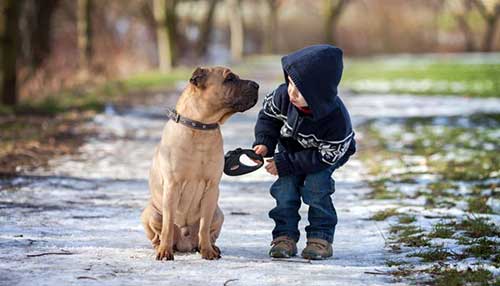
5 Benefits of Having a Pet at Home for Your Child

Did you know that pets have positive effects on the mental health of adults and children? You have probably seen babies or small children fearlessly, comfortably, and joyfully chasing after a cat, dog, or bird while outside; most children are interested in and curious about animals. It is a serious mistake to hinder a child's inclination towards this. You will better understand why we say this when you learn about the benefits of having pets at home for children.
1. Pets positively influence children's moral development
Feeling love and attachment towards an animal, taking care of it, and being careful not to harm it teaches a child to be giving and allows them to experience the joy and happiness of doing something for another living being. Pets help children become more understanding, sharing, helpful, and tolerant.
2. The impact of animals on the development of children's verbal skills
Even a baby who has not yet started talking tries to make sounds to establish a connection with an animal around them. A child who has learned to speak comfortably talks to a pet, which is a perfect listener and does not judge them. Therefore, growing up with a pet positively affects children's verbal development.
3. Pets help children develop a sense of responsibility
If you have a pet at home, you should give your child age-appropriate responsibilities related to your animal. A child who regularly feeds, walks, and cleans up after a pet, seeing these as their own duties, will also develop a sense of responsibility in other areas.
4. Pets relax people and reduce stress
Did you know that there are specialists who use pets for the therapy of their patients? Petting a cat or dog has a calming and stress-relieving effect on people.
5. Children learn to empathize with animals
Children are often selfish; their own wants and needs come above everything else. Growing up with a pet helps children develop empathy skills as it requires understanding the needs of another living being. If you have a cat or dog at home, your child will understand when it is hungry, cold, or bored and will want to meet its needs. They learn to care about the existence of another being.
Attention! A Pet is Not a Toy!
By bringing a pet into your home, you are not acquiring a decorative item or a toy that your child desperately wants; you should know this and ensure that your child understands it as well. A living being that needs training, which may sometimes do things you do not like, is entering your home; it needs attention and care, and being left outside after becoming attached to you hurts its feelings, shakes its trust, and makes it difficult for it to continue its life. You will need to dedicate time, provide space, and spend money for this living being. You should make your decision considering these factors. Additionally, you should also take into account the characteristics of the animal you are thinking of bringing home and its suitability for your child. It is easier to communicate with cats and dogs, but a cat is a more independent animal with unpredictable reactions, while a dog is more affectionate and sociable. If your child is old enough to understand its characteristics and behave accordingly, a cat is not a wrong choice, but if your child is very young and your home is suitable, a dog is likely to be a less problematic alternative. The suitability of the space is also very important when making this decision. For example, a dog would be unhappy in a very small house. If you plan for your child to take care of the pet you bring home, you should also remember that they might sometimes forget their duties and responsibilities in this regard, and that some things will need to be done by you. Taking care of an animal at home is a serious responsibility, so you should consider the issue from all angles.
Health and Life Other Content in the Category

Health and Life
How to Find the Right Live-in Couple for Your Villa?

Health and Life
Ways to Enjoy Your Time at Home During Corona Days

Health and Life
Effects of the Covid-19 Pandemic on Different Sectors in Turkey

Health and Life
Companion Fees 2019

Health and Life
Nutrition Recommendations for Alzheimer Patients

Health and Life
10 Tips for Caring for Alzheimer’s Patients

Health and Life
10 Symptoms of Alzheimer's Disease

Health and Life
5 Benefits of Having a Pet at Home for Your Child

Health and Life
Do You Suffer from Back and Neck Pain While Working?

Health and Life
Simple Exercises for Desk Workers

Health and Life
